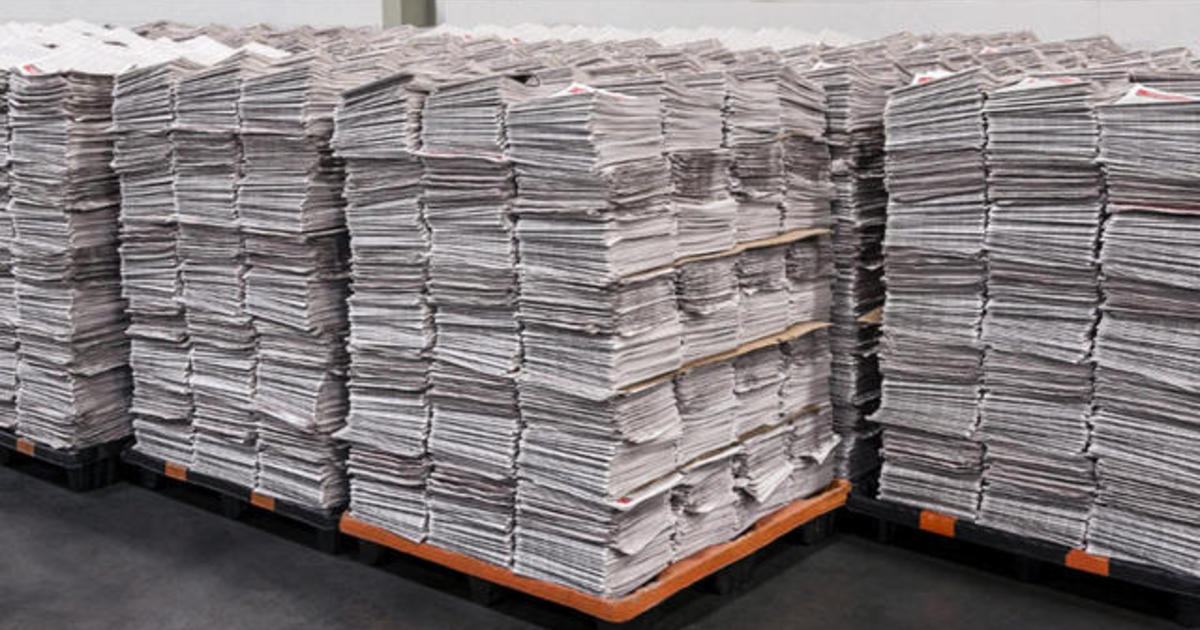
The struggling U.S. newspaper industry is caught up in a costly trade dispute that’s pushing up its production costs. The Trump administration put a tariff on groundwood paper, which is used in newsprint production, because of concerns the paper was subsidized by the Canadian government and sold at below-market prices. Most groundwood paper comes from Canada and nearly 70 percent of newspapers in the U.S. rely on the product. On Thursday, the Commerce Department will announce whether it will end that tariff.
Nick D’Andrea, vice president of production at the New York Times, told CBS News’ Alex Wagner the tariff has made printing on paper that much harder.
“Newspapers have their own challenges already. Our job is to try to protect the revenue of the printed newspaper,” D’Andrea said.
Ken Doctor, a news industry analyst, says the tariff is a blow to a print industry already in decline. As a result, small newsrooms have had to make tough choices from laying off staff to cutting the number of pages they print.
“This is the kind of unexpected event that happens….It takes an industry that may be hurting a little, and makes it far worse,” Doctor said. “Those tariffs have caused a increase in newsprint pricing of about 30 to 35 percent.”
Beyond the tariffs, declining print readership overall has caused printing plants to make adjustments. At the New York Times printing plant in Queens, over 600,000 newspapers are rolled out every night but not all copies are of the New York Times.
“One of the things that we’ve done over the last couple of years is we try to bring more business in so we started printing USA Today here. Just recently, we started printing Long Island Newsday and that’s happening nationally, the consolidation,” D’Andrea said.
In the last decade, weekday print newspaper circulation has dropped by more than 30 million nationally. And in just the last five years, as chief operating officer at the New York Times, Meredith Kopit Levien has witnessed a 40-percent drop in subscribers to the Times’ daily print papers.
Asked if newspapers will even be around in 10 years, Levien said, “The question is will we have quality, original, independent journalism available to the masses in 10 years? And I think the answer is yes, but it requires that news organizations make digital experiences that are as addictive and unrivaled as the journalism itself.”
The Times readership is increasingly going digital. In just the last year they’ve seen an increase of close to one million online subscribers, but not all papers have been able to pivot so successfully. Last week, Daily News laid off half its staff and in March the Denver Post cut their newsroom by a third.
“We are in a scary time for local journalism and I think quality, original, independent journalism at the local level is, like, foundational to community, to society, and ultimately to democracy,” Levien said.
© 2018 CBS Interactive Inc. All Rights Reserved.

